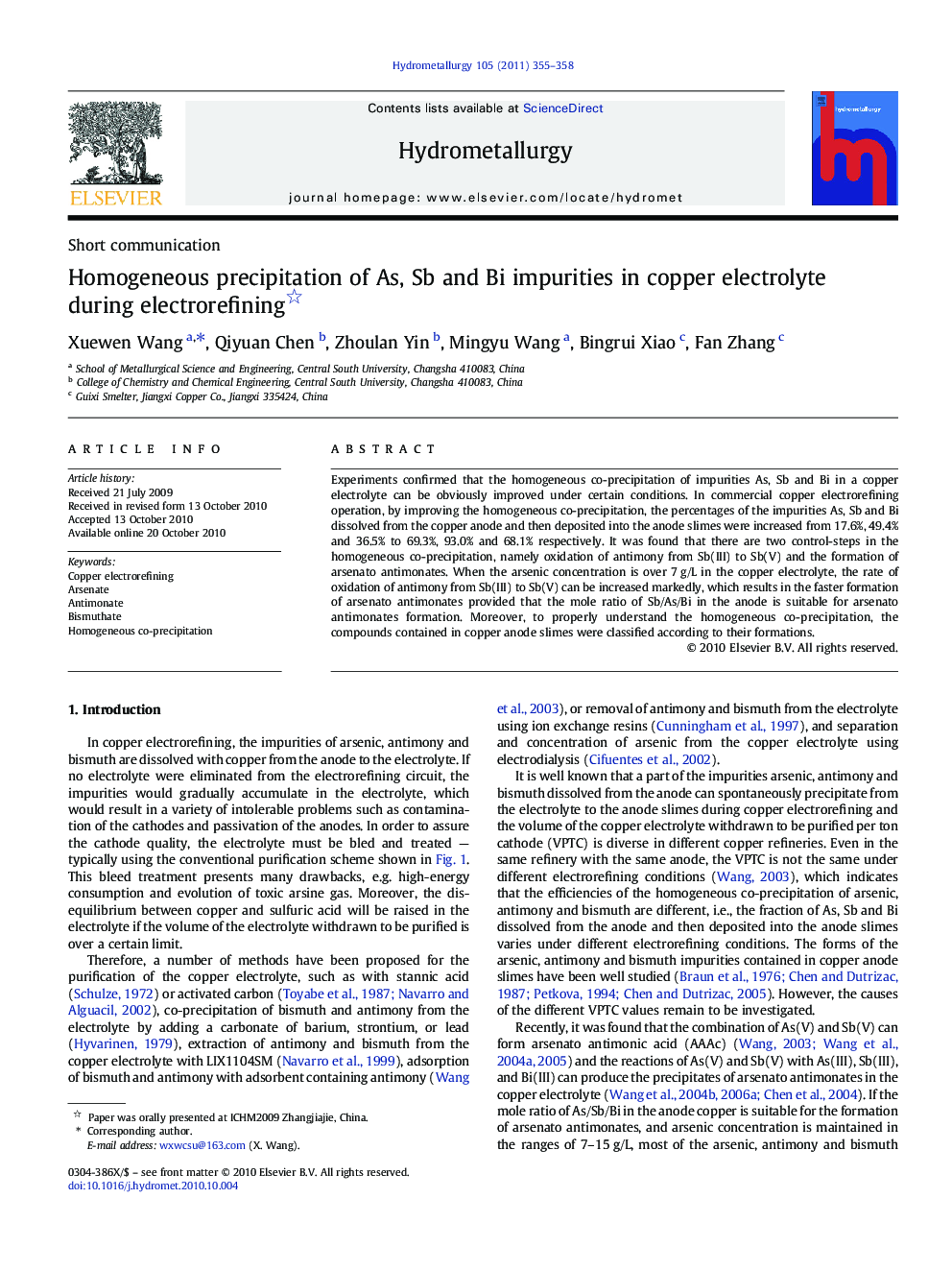| کد مقاله | کد نشریه | سال انتشار | مقاله انگلیسی | نسخه تمام متن |
|---|---|---|---|---|
| 212735 | 462064 | 2011 | 4 صفحه PDF | دانلود رایگان |

Experiments confirmed that the homogeneous co-precipitation of impurities As, Sb and Bi in a copper electrolyte can be obviously improved under certain conditions. In commercial copper electrorefining operation, by improving the homogeneous co-precipitation, the percentages of the impurities As, Sb and Bi dissolved from the copper anode and then deposited into the anode slimes were increased from 17.6%, 49.4% and 36.5% to 69.3%, 93.0% and 68.1% respectively. It was found that there are two control-steps in the homogeneous co-precipitation, namely oxidation of antimony from Sb(III) to Sb(V) and the formation of arsenato antimonates. When the arsenic concentration is over 7 g/L in the copper electrolyte, the rate of oxidation of antimony from Sb(III) to Sb(V) can be increased markedly, which results in the faster formation of arsenato antimonates provided that the mole ratio of Sb/As/Bi in the anode is suitable for arsenato antimonates formation. Moreover, to properly understand the homogeneous co-precipitation, the compounds contained in copper anode slimes were classified according to their formations.
Research Highlights
► Experiments confirmed that the homogeneous co-precipitation of impurities As, Sb and Bi in copper electrolyte can be obviously improved under certain conditions.
► The homogeneous co-precipitation contains two control-steps, namely oxidation of antimony from Sb(III) to Sb(V) and the formation of arsenato antimonates.
► In commercial copper electrorefining operation, by improving the homogeneous precipitation, the percentages of the impurities As, Sb and Bi dissolved from copper anode and then deposited into the anode slimes were increased from 17.6%, 49.4% and 36.5% to 69.3%, 93.0% and 68.1% respectively.
Journal: Hydrometallurgy - Volume 105, Issues 3–4, January 2011, Pages 355–358